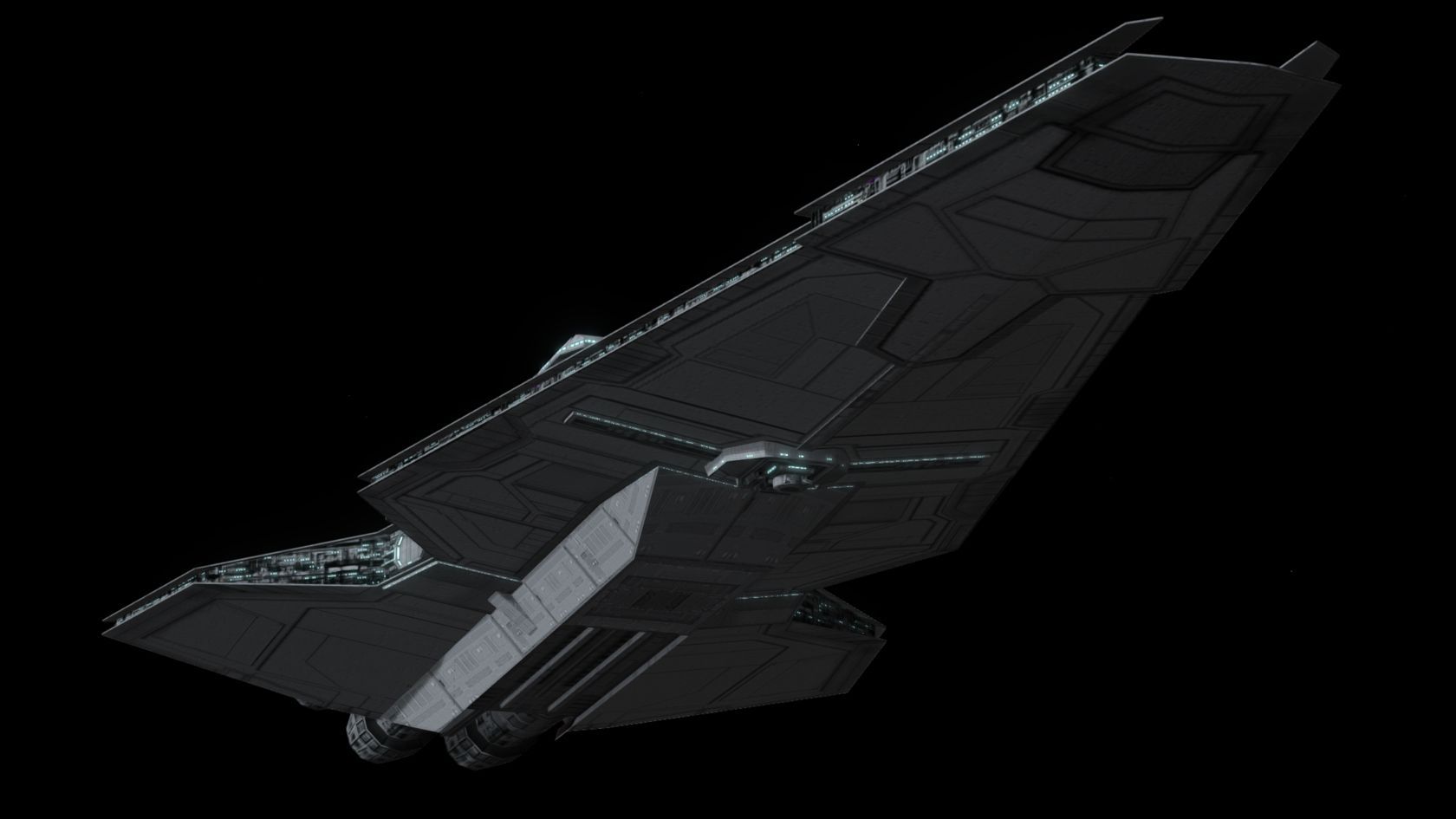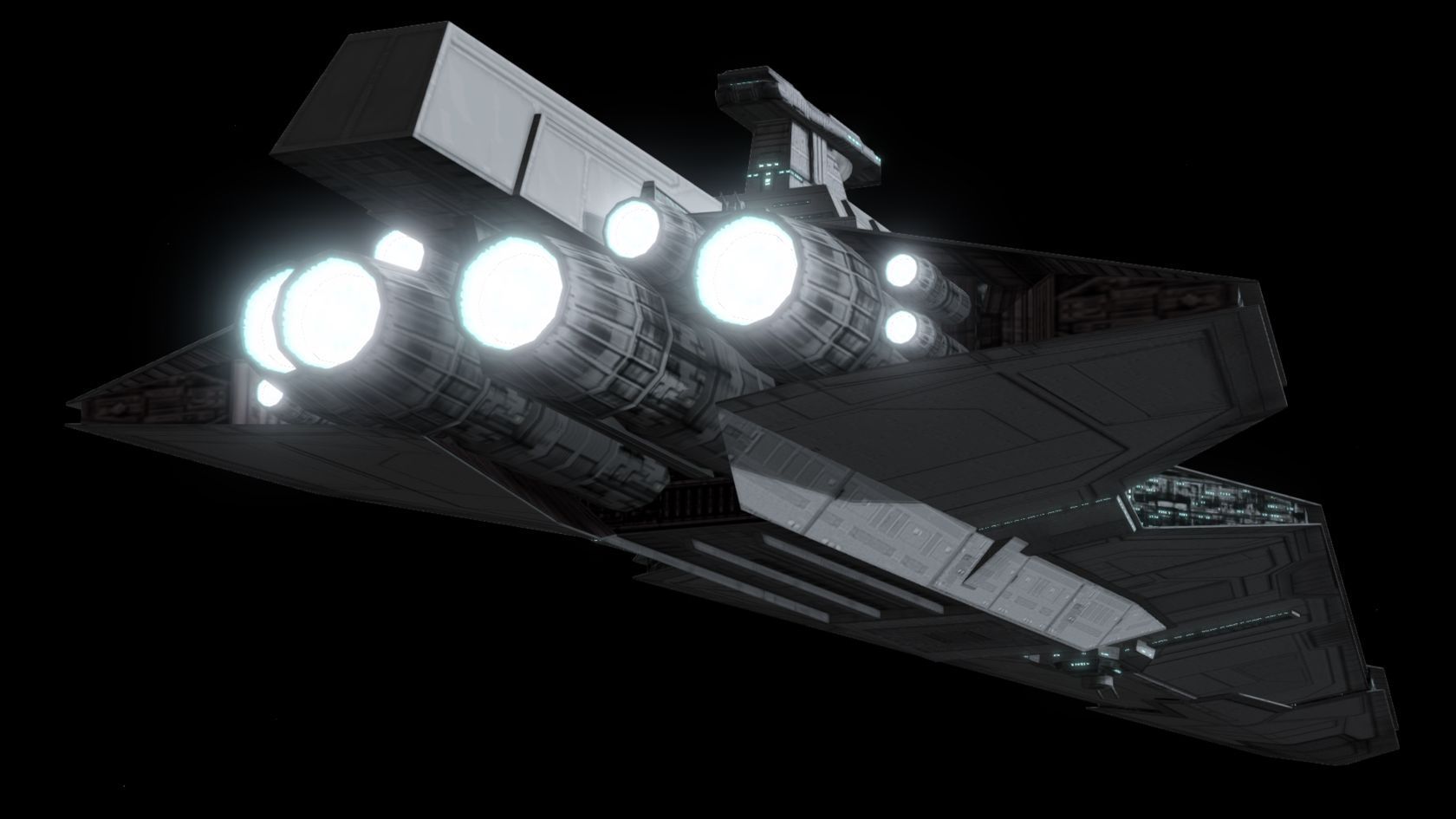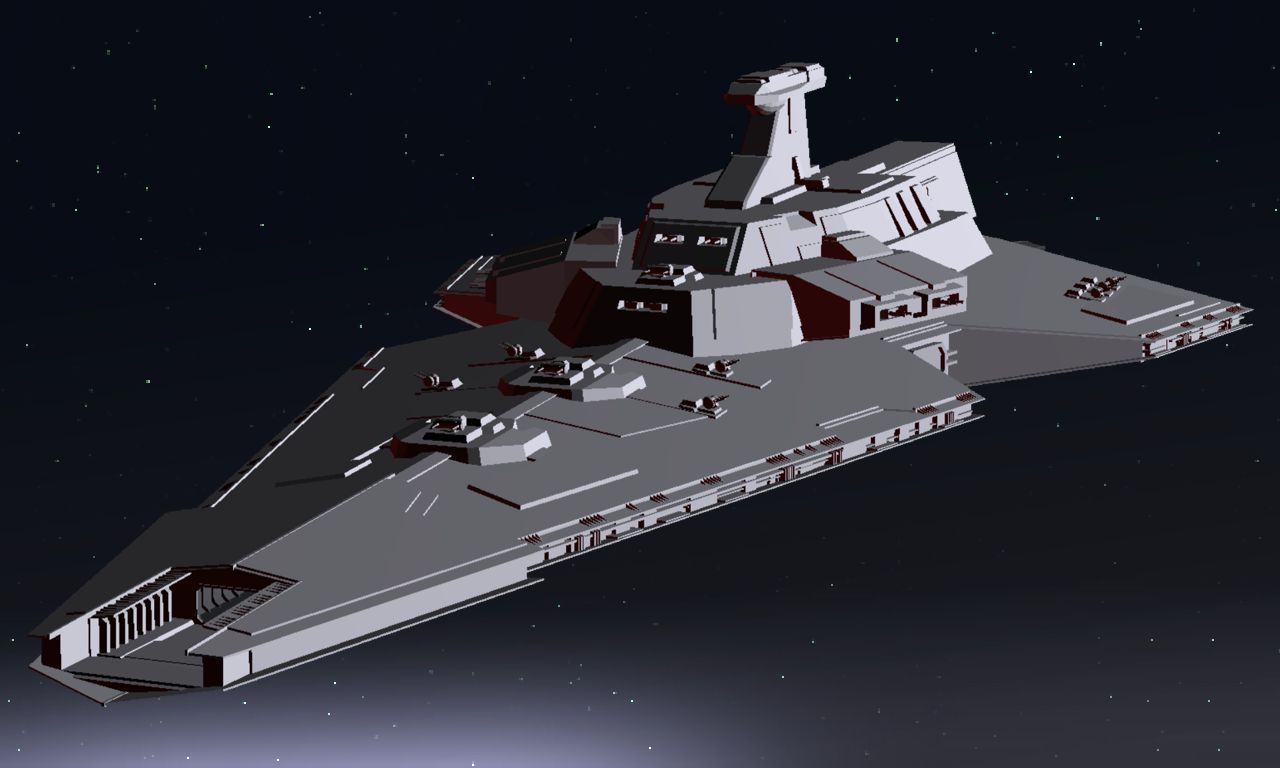Valiant-class Republic Cruiser
Episode III - Capital Ship - Carrier / Star Destroyer
Bridging the design gap between the Acclamator and the Venator, the massive Valiant translates its focus from a mere troop ship or carrier to the actual role of an offensive combat vessel Slightly larger than the Venator its firepower greatly excedes that of the Attack Cruiser.
This model was based on a drawing by fellow XWA community member Kyle Kieliszenski aka. Kyle-K_ski, who challenged me to build a model of it. Kyle also provided a more detailed description and backstory, which you can find below a bit further down..
Armament
5 heavy turbolaser turrets
16 medium dual turbolaser cannons
26 dual turbolaser cannons
49 point-defense laser cannons
2 heavy ion cannons
3 ion cannons
2 heavy proton torpedo tubes
4 tractor beam emitters
Status
v1.2 Released
June 26, 2021
Remake in Progress
Author Information
Original Design: Kyle Kieliszenski
Model & Textures: Vince T
Add. Textures: Matt
OPTing: Vince T
Add. OPTing: OOM-911
Dev notes & Origins
The design originates from a sketch created by Kyle Kieliszenski aka. Kyle_k_ski, along with the following background info:
While similar in appearance to other medium sized cruisers of the Republic era, the Valiant's design is nevertheless unconventional in execution. Traditionally, heavy turbolasers have been distributed evenly on both the port and starboard of capital craft, and they have also been setup on the same plane while being side by side in rows.
The most noticeable feature of the Valiant's design can be summarized by its abandonment of this "side by side and in rows" scheme. Instead of endorsing a design that limited the firing arcs, the Valiant's chief designer decided to mount the heavy turbolasers in a "stepped" fashion along the vessel's dorsal and ventral spines. With the weapons mounted in this manner it was now possible for every heavy turbolaser to bring their firepower to bear on a single target whether it was to its port, starboard, or stem. In most designs, the heavy turbolasers are unable to fire directly stem, as their side by side setup makes it impossible for them to fire due to the fact that a neighboring cannon is in its firing arc. The Valiant avoids this dilemma altogether, and in spite of "only" having five heavy turbolasers it is still a very formidable opponent when it is in pursuit of a target. For comparison, in a broadsides confrontation the Venator is only able to direct its four heavy turbolasers against its opponent, while the Valiant can always apply its five cannons.
The Valiant also maximizes the firing arcs for its other weapon systems. This is primarily done by not only ensuring that their placements are set on different elevations, but also by making sure that their placement is staggered. There is not a single weapons system where batteries are mounted directly next to another weapon system's firing plane or arc.
If confronted with a situation where it is exchanging fire with capital ships on its port and starboard, the optimal strategy is to direct all of its heavy turbolasers on one of the targets, while pummeling the other opponent with one of its side's 8 medium dual turbolasers and 13 dual turbolasers. The point-defense lasers will also contribute to the cause when not engaging starfighters or missiles.
The more efficient manner of placing heavy turbolasers has allowed for a number of important vessel refinements. While having three fewer heavy turbolasers than the Venator, the Valiant makes up for this by increasing the power of its cannons by 30%; a figure that pushes the upper boundaries of existing turbolaser technology. The Valiant’s larger turrets also feature the installation of more robust shield generators since a primary target of capital ships is its array of heavy turbolaser turrets.
The Valiant also diverges from the Venator by having a much smaller compliment of starfighters. This reduction of starfighter infrastructure allows more room to be devoted to defensive, offensive and maneuvering systems. Not only are its shields and armor plating significantly more robust than a Venator's, its larger engines allow for a 12% increase in velocity, and the greater number of thrusters allows the Valiant to behave slightly more nimbly than its cousin craft.
Whenever possible, the Valiant tailors its starfighter compliment to maximize its lethality against other capital ships. The preferred starfighter loadout is one that emphasizes heavy assault craft and fighter/bombers.
The last noticeable difference between the Valiant and its cousins lies in the number of windows that the vessel utilizes. The Chief Architect of the Valiant was notorious for chiding the use of windows, calling them the "...ultimate means by which one can clearly watch the approaching bolt that is going to suck one out into space..." After much analysis to determine which windows were absolutely essential for battle, the Valiant was constructed with only 17% of the number of windows found on the average ship of her class.
The first of the Valiants came on line shortly after the Venator was already assigned to its Acclamator supporting role. During the prototypes’ construction, the design of the Valiant’s heavy turbolasers was particularly sophisticated and was thus very challenging to properly execute. The number of refinements that were needed to get them to operate optimally delayed the mass construction of the Valiant class by nearly five months. By the time the first of the ships came online, there was little fanfare, since the Clone Wars were already fully raging.
Initially, the loss of Valiants was disproportionately high, and was primarily due to not being used in the intended tactical fashion. Unfortunately, the initial assessments of the Valiant's poor performance were erroneous, with blame being leveled against its supposed inferior design, and thus the Valiant was assigned to light support duty in the backwater regions of the Republic.
There were also complaints regarding its relatively modest ability to deploy ground vehicles. Once again the ship's primary mission capacity was erroneously applied and assessed. The purpose of the Valiant's ground forces is not to be the main assault force, but rather the units are deployed for rapid and strategic support strikes. The course of battles can be dramatically altered by an efficient deployment of forces to the flanks or to the rear of the enemy's positions. Early in the campaign, many of the Valiant's ground forces were wasted by a severe misapplication of their capabilities.
It was only near the end of the Clone Wars that several reanalysis of prior engagements exposed the tactical misapplication of the vessel's systems, and the ship was folded back into the primary fleet. For the remainder of the war and beyond, the Valiant proved its worth time and time again. Sadly, its ultimate "silent" fleet legacy, which did not match its vaunted namesake, was cemented in place by the low number of craft that were produced. Everyone witnessed the much more common Venator's capabilities, and thus the Venator's design scheme became permanently adopted by the Republic and eventual Empire.
Still, the Valiant was a hearty craft, and though few in number, the class continued to survive into the establishment of the New Republic. Many of the Imperial refits of Republic era ships saw the reduction of their hangar bays, and the commanders of the Valiant considered it a "lucky boon" that the vessel was perceived with such a low reputation. Since the class was not seen as a high priority, it missed most of the "upgrades" of the Imperial years, and thus was able to maintain its now-large compliment of starfighters. While commanders of the class continuously tried to promote the Valiant's attributes, tactical mis-assessments and political cronyism directly held back the application of its admirable aesthetics.
It is no accident that the Valiant class produces the lowest number of candidates to be promoted beyond commander, as its commanders are most satisfied to stay onboard its stoic decks and continue its silent, yet solid service.







